David Stairs
“If the machinery craze grows in our country, it will become an unhappy land. It may be considered a heresy, but I am bound to say that it were better for us to send money to Manchester and to use flimsy Manchester cloth than to multiply mills in India.”
—Mohandas Gandhi, Hind Swaraj
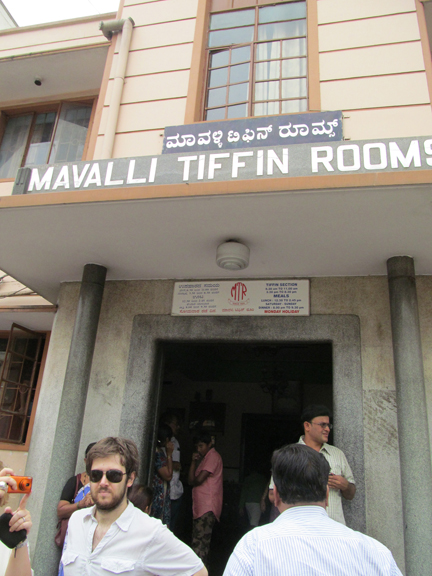
Sundays are extremely busy at the popular MTR with an hour’s wait common
Indians love food and, according to the BBC, what they eat is very good for them. If you think this might pose a problem in a nation with 1.2 billion mouths to feed, consider the following. On a recent train trip on the Shabadti Express from Chennai to Bangalore the car steward was kept hopping distributing, by my count, nine rounds of food and beverage, including water, juice, two snacks, main course, yogurt, tea, ice cream, and coffee. Considering the price of the ticket was $8, this was an amazing bargain!
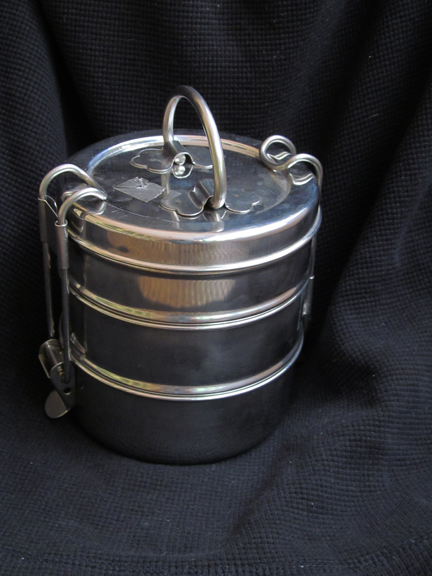
One of the things that has fascinated me since my arrival here is a thing the Indians are deservedly proud of, the tiffin. If American kids have Batman lunch pails, and Japanese children have bento boxes, Indian students carry their own portable feast in a tiffin. The word originated in British India, and formerly meant a light lunch, like the kind served at the Mavalli Tiffin Rooms on Lalbagh Road near the famous Lalbagh Botanical Garden.
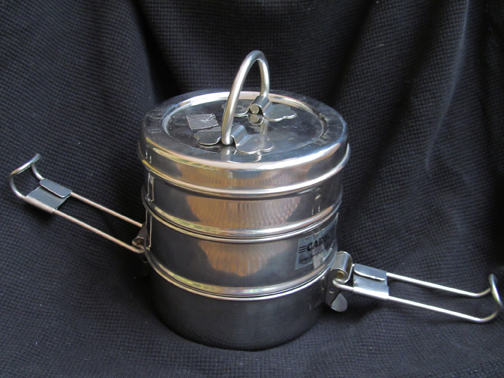
These days it also refers to the food tins, which come in various shapes, from cylinders, to squares, and even pyramids. One can find such wonders in all sizes, from small and personal to gigantic 3-foot-tall banquet size, but they all have the same quality: they stack neatly and lock together. They are made primarily of stamped chrome-plated lightweight steel, and feature a variety of snap locking mechanisms. The one I purchased, size 7 width by 3 height, seemed a good size for a three-course school lunch.
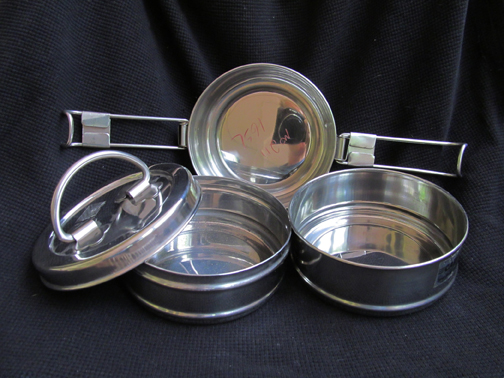
In his famous essay about Indian home rule, Hind Swaraj, Gandhi encouraged Indians to do for themselves rather than depend upon outsiders. Like Thomas Jefferson in Notes on Virginia Query XIX, or the early William Morris, and perhaps most like Samuel Butler’s Book of the Machines in Erewhon, Gandhi argued against manufacturing and in favor of an agrarian nation of many small villages. The tiffin is a good example of mass manufacturing and, as such, might have disappointed Gandhi’s preferences for cottage industry. On the other hand, as an instance of Indian ingenuity and self-reliance, tiffins are generally manufactured in India, Gandhiji might well have cut it some slack.
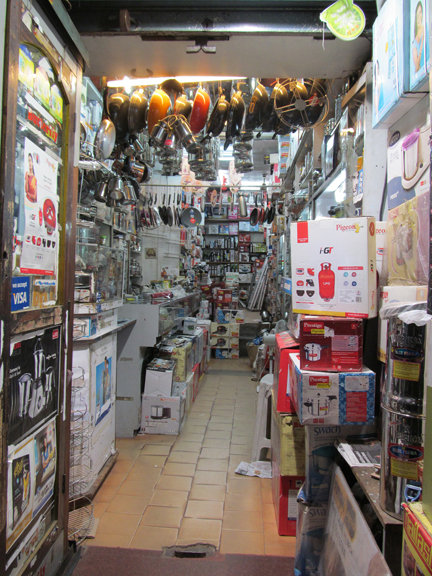
Kitchen goods store carries a wide variety of tiffins
One small drawback is that tiffins are not insulated, a consideration in a cold climate. But, since coldness only occurs in the extreme Himalayan north of India, tiffin stacks are superlatively well adapted to most local climates. I’m determined to fly in the face of practicality. Back in cold windy Michigan, I intend to use my tiffin for leftover chili, rice, and applesauce. And I’ll have the coolest lunchpail on my block!
David Stairs is the founding editor of Design-Altruism-Project











Leave a Reply
You must be logged in to post a comment.